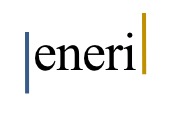Introducing and establishing guidelines for the responsible conduct of research
The codes of conduct for researchers belongs to the basic research integrity infrastructure. They are often the only integrity infrastructure regularly in place (Kezar & Sam, 2011). In introducing and establishing guidelines for the responsible conduct of research into a developing infrastructure, it is necessary to consider what is expected as a good practice, should guidelines be national or institutional, what would be the spirit of the code of conduct and who may assume leadership of the process of creating national guidelines.
What is good practice?
Institutional guidelines may define good practices differently and they may highlight different domains. The ALLEA European Code of Conduct for Research Integrity (2017) provides a framework for responsible conduct of research and defines responsible practices in the areas of research environment; training, supervision and mentoring, research procedures; safeguards; data practices and management, collaborative working; publication and dissemination; and reviewing, evaluating and editing. The definition of good practices serve to pinpoint desired behaviors. The lack of good practices may not automatically entail misconduct. Rather, that is another area requiring definition. However, by outlining what constitutes good practice, it will be possible to strive collectively towards defining what kind of practices should be encouraged and how.
National or institutional guidelines?
In addition, there are national and/or institutional guidelines, which may go into greater or lesser detail than the ALLEA Code of Conduct. National and institutional guidelines should align with the ones provided by ALLEA. There are advantages with nationally uniform codes of conduct as this will help research institutions within a given context to create a shared understanding. The setting up of these requires the existence of a body that can take on the task and seeking sufficient consensus among research institutions in order for the guidelines to be commonly adopted. A national level body taking up this task needs to have sufficient authority and leadership capacity to lead the process and to support parties in negotiating a mutual understanding. (cf. also Spoof, 2018).
If there is not at a national level an institution or body that can take on the task of coordinating the set-up of a common code of conduct, institutions are likely to have their own. However, institutional cooperation may be beneficial in terms of defining key issues and sharing good practices. The challenge with aligning institutional guidelines is that institutions will likely wish to highlight institutional characteristics in their guidelines, and they may also have distinct value bases on which they base their guidelines or recommendations (cf. Godecharle, Nemery, & Dierickx, 2013). National level guidelines on good practice may not so much draw on institutional values but on a common value-base for research in general.
What is the spirit of the code of conduct?
There is variation in the approaches of codes of conduct some outlining a values base or the ethical principles that ought to guide researchers, some being more specific about conduct in particular context (cf. de Lecuona & Löfström, 2015, reported also in de Lecuona, Löfström & Maes, 2015). It is probably worthwhile to consider both aspects so that the code of conduct offers some more general direction in terms of values and norms of science, but at the same time provide examples and pinpoint responsibilities (e.g. individual or institutional).
Who may assume leadership of the process of creating national guidelines?
In many European countries, there is a national integrity agency/board, but their roles in terms of creating common guidelines, providing training, and handling allegations of misconduct varies. If there is a national authority, it may be within the mandate of this authority to take the lead in creating a national code of conduct. Yet, it is important that research institutions are part of the process in order for the institutions and their academic staff to commit to the common guidelines. There are also experience of such development work coordinated or supported by a ministry or other state-level institution. Even so, it is crucial that higher education and research institutions can exercise academic autonomy and are able to assume ownership of the process. Therefore, their active engagement is important.
References
ALLEA (2017). European Code of Conduct for Research Integrity. Revised edition
Godecharle, S., Nemery, B., & Dierickx, K. (2013). Guidance on research integrity: No union in Europe. Lancet, 381,1097–1098 + Appendix 6 pages.
Kezar, A. J., & Sam, C. (2011). Enacting Transcendental Leadership. Creating and supporting a more ethical campus. In T. Bertram Gallant (Ed.). Creating the Ethical Academy. A systems approach to understanding misconduct and empowering change in higher education (pp. 153-167). New York. Routledge.
de Lecuona, I. & Löfström, E. (2015, April). Report on codes of conduct and best practices in research of LERU universities. LERU Expert Group on Research Integrity. Internal report.
de Lecuona, I, Löfström, E. & Maes, K. (2015). Whose responsibility is it anyway? A comparative analysis of core concepts and practice at LERU universities to identify and develop good practices in research integrity (Presented by Inge Lerouge). 4th World Conference on Research Integrity (WCRI), Rio de Janeiro, May 31-June 4, 2015.
Spoof, S. K. (2018). A framework for self-regulation in research integrity: the Finnish model, step by step. Responsible Research. https://www.vastuullinentiede.fi/en/planning/framework-self-regulation-r....
